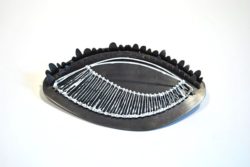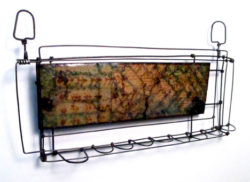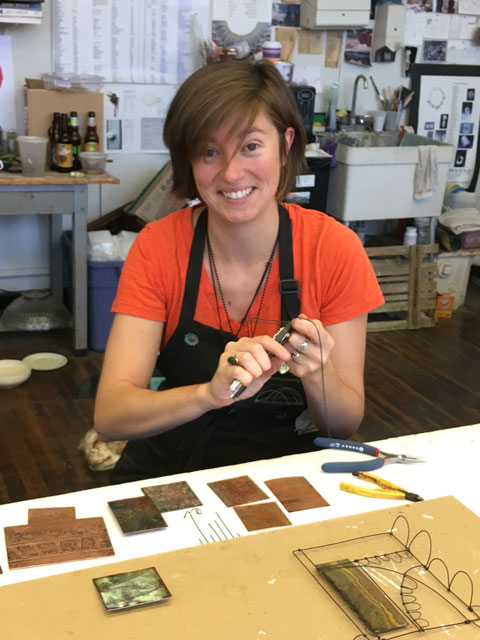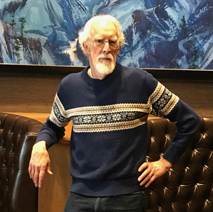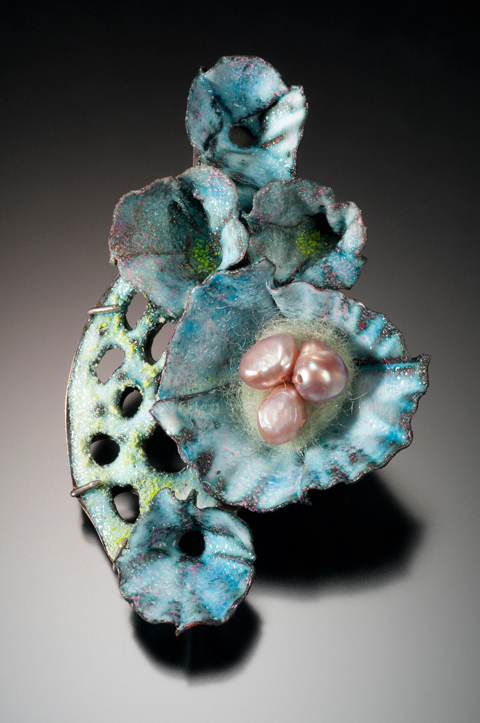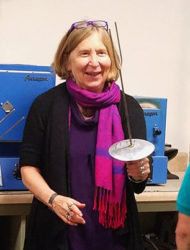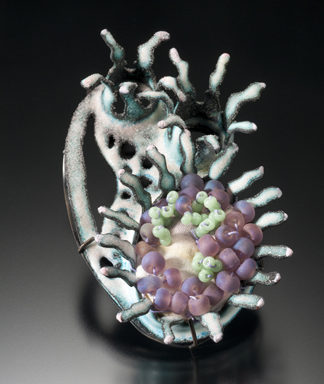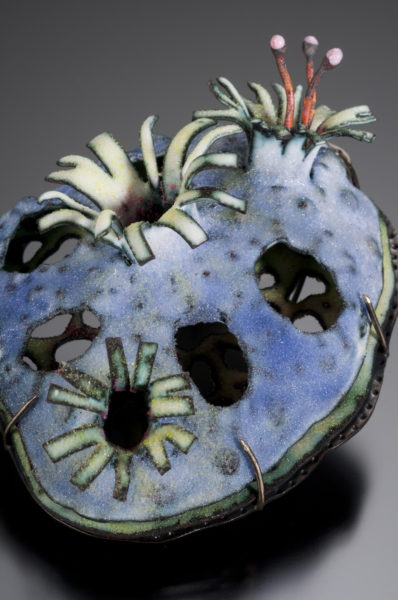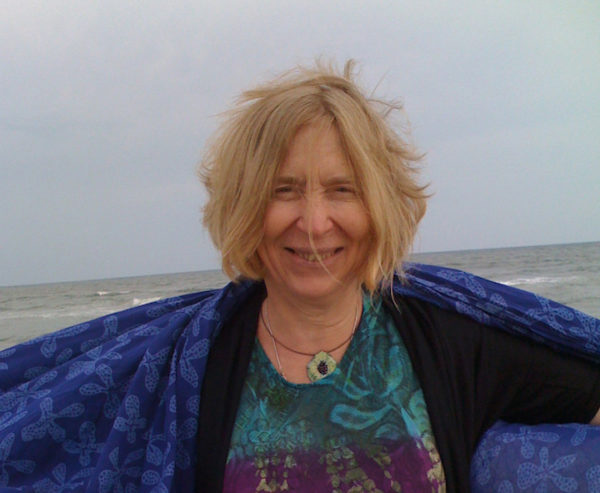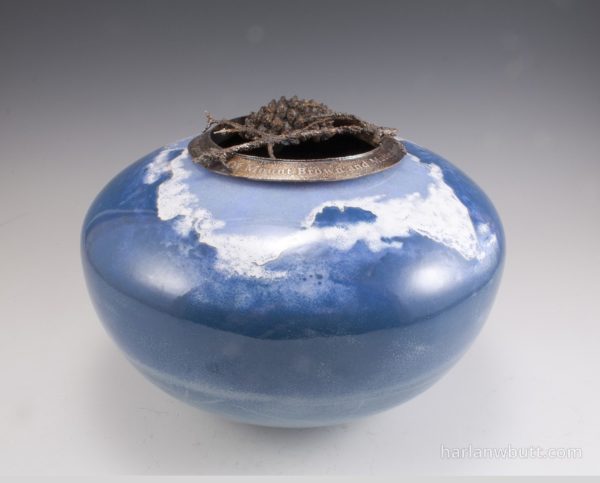
Glacier Vessel #2 2015 copper, enamel, silver 5.5 x 8 x 8
Since 2003, enamelist and metalsmith Harlan Butt has been at work on a series of enameled vessels based on our national parks. On vessels he forms himself, he uses traditional techniques to create imagery and text that he develops during extended wilderness stays. With delicate, often dreamlike images, glowing colors, and short phrases, Harlan’s work breaks the standard craft aesthetic, capturing not just the flora and fauna but a feeling, the sense of being at home in a wild space.
His work is rooted in a long tradition of artists in our national parks–a great many of the parks have artist residencies, of which he has done several–and though he has no overtly political agenda, his project is particularly relevant in the context of reduced funding for the parks. Most of all there is the sense of something valuable and permanent being subverted, used instead to give worth to something ephemeral and at risk.
We are thrilled that Harlan Butt will be giving a presentation about his National Parks series in conjunction with the class he is teaching for the Center for Enamel Art. Free and open to the public, the talk will be held at 6:30pm on October 14, at Nahl Hall at the California College of the Arts. Don’t miss this opportunity to hear a true master speak about his process, his inspirations, and why our connection to nature matters more now than ever.
Center for Enamel Art: How did the National Parks series come about?
Harlan Butt: My work almost from the beginning was nature oriented, and had to do with wilderness, natural geography. In 1979 I went out to Big Bend National Park in west Texas. I had a little bit of funding from the university, so I took some pictures, went back to the studio and made some vessels that were inspired by the park. That was sort of the core of it, but I didn’t do it again for many years. It wasn’t until 2003 that I started the series. I thought I would propose a project to my university, and it seemed like the National Parks were a natural place to go to be inspired by different kinds of landscapes. I ended up going to three different parks for a couple of weeks each, and then coming back to the studio and making works inspired by them. Eventually I realized that some of the National Parks have artist residencies, so I began applying to those, and I’ve done three so far. They give you a place to stay for a month or so, and you have access to the park while you are there.
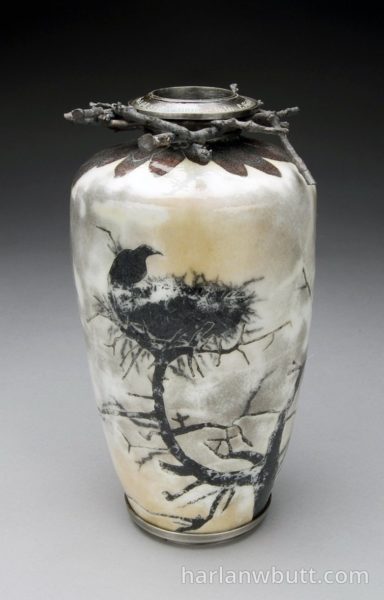
Yellowstone Vessel #1 2010 copper, enamel, silver 8 x 4 x 4
CEA: Can you talk a little bit about what the series means to you, and what you are trying to achieve with it?
HB: I think it started out as purely artistic and personal, but it has evolved to the point where…well, the natural world in general is disappearing, and part of the reason is because we’ve sort of distanced ourselves from it. Part of the way that people can make contact with nature is through the National Parks. And of course that has caused problems too, because a lot of the parks have so many people visiting that there is a certain deterioration of the park. But I still think that if people are not exposed to the natural world, they won’t have any feeling that it needs to be protected. So I do want to raise awareness. And not just by depicting the physical part of whatever park I go to, but something of the essence of what it’s like to be there, which is a hard thing to describe.
CEA: And maybe that is easier to express visually. I notice that some vessels also have original poems etched into them.
HB: Yes, what I’m trying to do is have multiple layers of expression that can at least point to the complexity of a particular place.
To see more of Harlan Butt’s work and learn about his process, visit https://harlanwbutt.com/home.html.
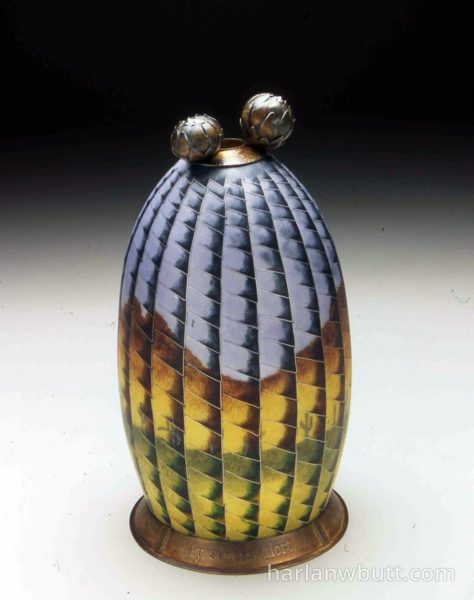
Organ Pipe Vessel #1 2004 silver, enamel, copper 8.5 x 4.5 x 4.5
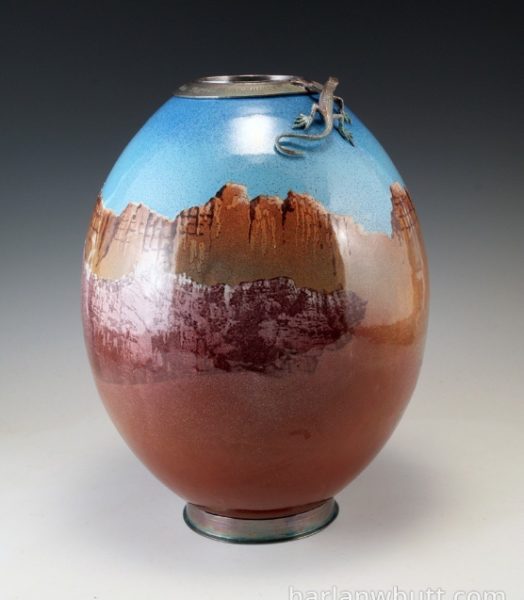
Bryce Canyon Vessel #1 2017 copper, enamel, silver 9 x 7 x 7
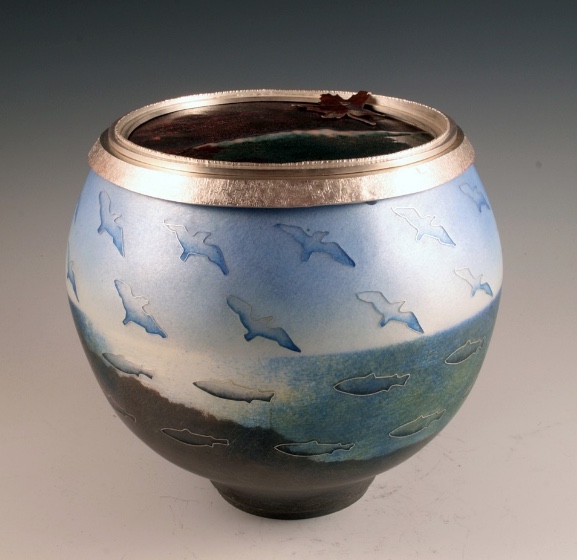
Acadia Vessel #4 2015 silver, enamel, copper 6 x 6 x 6



